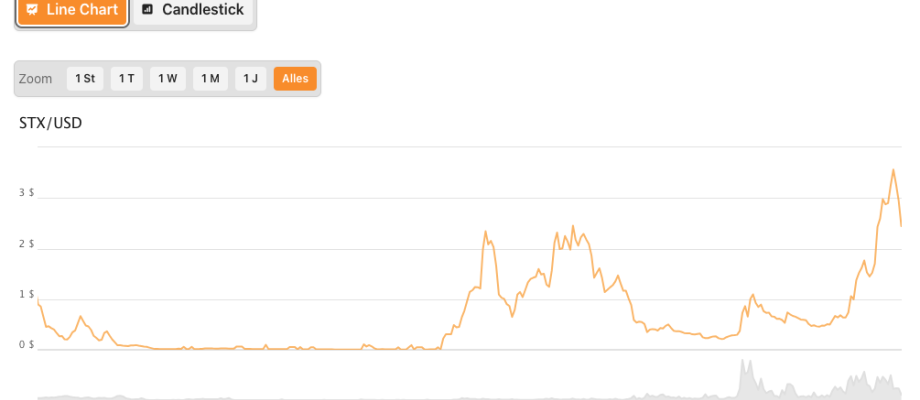In its design conceived by Satoshi Nakamoto, Bitcoin is functionally quite limited. Blocks are mined every ten minutes on average and only contain a comparatively small amount of transactions. Smart contracts are hardly conceivable with this transaction throughput.
If you look at competing altcoins, you can expect applications such as staking, yield farming and a lively NFT market. Bitcoin’s conservative development is not necessarily negative. Bitcoiners would even assume that the associated greater decentralization and ultimately security is a feature rather than a bug.
But with the help of so-called second-layer networks, complex applications are also conceivable for Bitcoin. Perhaps the most well-known second-layer network is Stacks.
What is Stacks?
“Stacks is a Bitcoin layer for smart contracts. It makes it possible to use smart contracts and decentralized applications on Bitcoin and to process transactions on the Bitcoin blockchain,” says the white paper project.
The project is secured using Proof-of-Transfer (PoX). A consensus mechanism that is “extremely energy efficient and recycles proof-of-work energy.” This is done via the project’s native token. STX is intended to incentivize mining Stacks blocks; For this, the miners receive a reward in BTC.
STX has a market capitalization of $3.4 billion at the time of writing.
What applications are conceivable with stacks?
Stacks’ goal is to make DeFi applications accessible on Bitcoin; Use cases such as lending, trading Bitcoin-secured stablecoins or even decentralized Bitcoin exchanges are conceivable.
It is also interesting that Stacks uses Clarity, a non-Turing complete programming language. Unlike Ethereum, which is written in Solidity, it advertises that the code can be read by humans. With smart contracts where a lot of money is involved, this is an advantage that cannot be dismissed.
What is Stacks Token (STX)?
In contrast to other second-layer networks such as Lightning or Rootstock, Stacks comes with a native token. According to the white paper, the STX token plays a key role in the Stacks ecosystem. STX is intended to create an incentive to mine stacks blocks and also serves as a binding to the Bitcoin base layer.
Read too


The associated possibility of so-called stacking is also exciting. Users can lure their STX and earn Bitcoin. The principle is based on staking, with which users can earn passive income on proof-of-stake platforms such as Ethereum.
Is it worth getting started with STX?
Bitcoin Layer 2s could become one of the dominant narratives of this bull market. Because the voices criticizing Bitcoin for its lack of functionality are becoming louder. Theoretically, Stacks represents a solution to this criticism – and could dem become a big beneficiary. Bitcoin venture capitalist Thesis also shares this view. In “State of the Bitcoin Network” writes the company:
2023 has been a year of momentum and expanded possibilities for stacks amid the general excitement around Bitcoin innovation.
Another argument in favor of investing in STX is that Stacks is one of the few Bitcoin Layer 2 solutions in whose adoption speculators can participate quite easily. The token is already listed on many centralized exchanges, including Coinbase and Bitpanda.
Given the experimental phase of Bitcoin DeFi, entry is likely to be significantly riskier than investments in the base layer. However, since the narrative of Bitcoin smart contracts is likely to continue for a while, one can definitely think about a cautious allocation.
Disclaimer: The analyzes presented on this page do not represent buy or sell recommendations. They are merely an assessment by the editor.
This might also interest you
